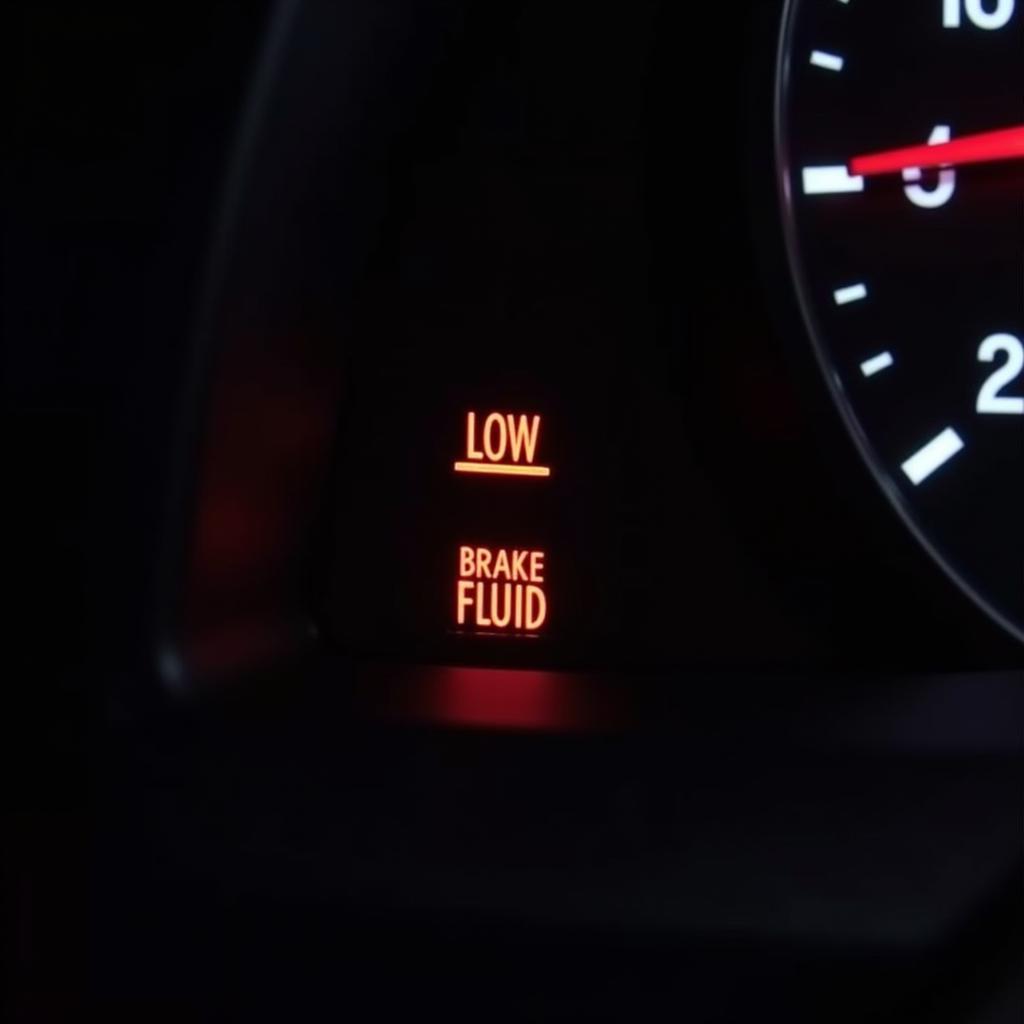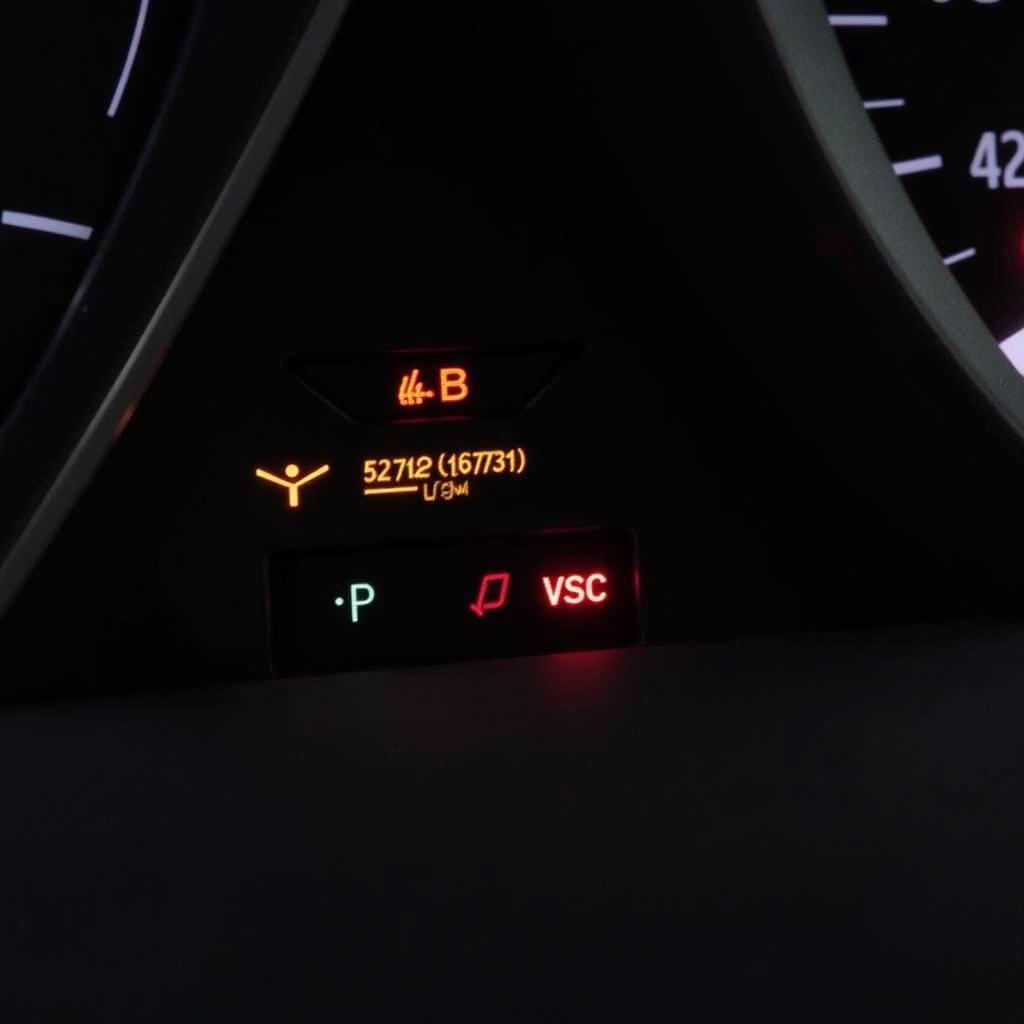The brake warning light on your dashboard is a crucial safety feature. When illuminated on your 2000 Ford Windstar, it signals a potential issue with your braking system that requires immediate attention. Ignoring this warning could lead to reduced braking performance and increase the risk of an accident. This comprehensive guide explores the common causes of a lit brake warning light in a 2000 Ford Windstar and provides insights into diagnosis and troubleshooting.
Understanding Your Brake Warning Light
The brake warning light is designed to alert you of two main problems:
- Low brake fluid: Your Windstar uses hydraulic pressure to activate the brakes. If the brake fluid level drops too low, there might not be enough pressure to operate the brakes effectively.
- Engaged parking brake: The brake warning light also serves as a reminder that your parking brake is engaged.
 Low Brake Fluid Warning Light
Low Brake Fluid Warning Light
Common Causes of a Lit Brake Warning Light
While low brake fluid or an engaged parking brake are the most straightforward culprits, several other issues can trigger the brake warning light in your 2000 Ford Windstar:
1. Worn Brake Pads
Brake pads are designed to wear down over time. When they become excessively thin, the brake pad wear indicator will make contact with the rotor, triggering the brake warning light.
2. Brake Fluid Leak
A leak in the brake lines, calipers, or wheel cylinders can cause a drop in brake fluid level, activating the warning light.
3. Faulty Brake Master Cylinder
The brake master cylinder is responsible for distributing brake fluid to the wheels. A malfunctioning master cylinder can disrupt the hydraulic pressure, leading to the illumination of the warning light.
4. ABS Issues
While less common, a problem with your Anti-lock Braking System (ABS) can also trigger the brake warning light.
Diagnosing the Problem
Important: If your brake warning light comes on, it’s crucial to stop driving immediately and diagnose the issue. Continuing to drive with a compromised braking system can be extremely dangerous.
Here’s a step-by-step guide to help you diagnose the problem:
- Check the parking brake: Ensure the parking brake is fully released. If it’s engaged, disengage it and see if the light turns off.
- Inspect brake fluid level: With the engine off, locate the brake fluid reservoir under the hood (refer to your owner’s manual if needed). Check the fluid level. If it’s low, add the correct type of brake fluid as specified in your owner’s manual.
- Examine for leaks: Carefully inspect the area around the master cylinder, brake lines, and each wheel for any signs of fluid leaks. A leak will appear as a wet spot and may have a distinct odor.
- Consult a professional: If you’ve checked the above and the light remains on, or if you discover a leak, it’s time to seek professional help.
Remote Diagnostics and Software Solutions
In today’s technologically advanced world, remote diagnostics and software solutions can play a vital role in identifying and addressing brake system issues in your 2000 Ford Windstar.
“Remote diagnostics allow us to analyze your vehicle’s data in real-time, often pinpointing the root cause of the problem without the need for an immediate physical inspection,” says John Smith, Senior Automotive Engineer at XYZ Auto Solutions. “This can save you valuable time and money in diagnosing the issue.”
Moreover, software updates for your vehicle’s Electronic Control Unit (ECU) can sometimes address brake system issues.
Conclusion
A lit brake warning light on your 2000 Ford Windstar should never be ignored. Understanding the potential causes and performing basic checks can help you determine the severity of the problem. Remember, your safety is paramount – if you suspect any issues with your braking system, seek professional assistance immediately.

